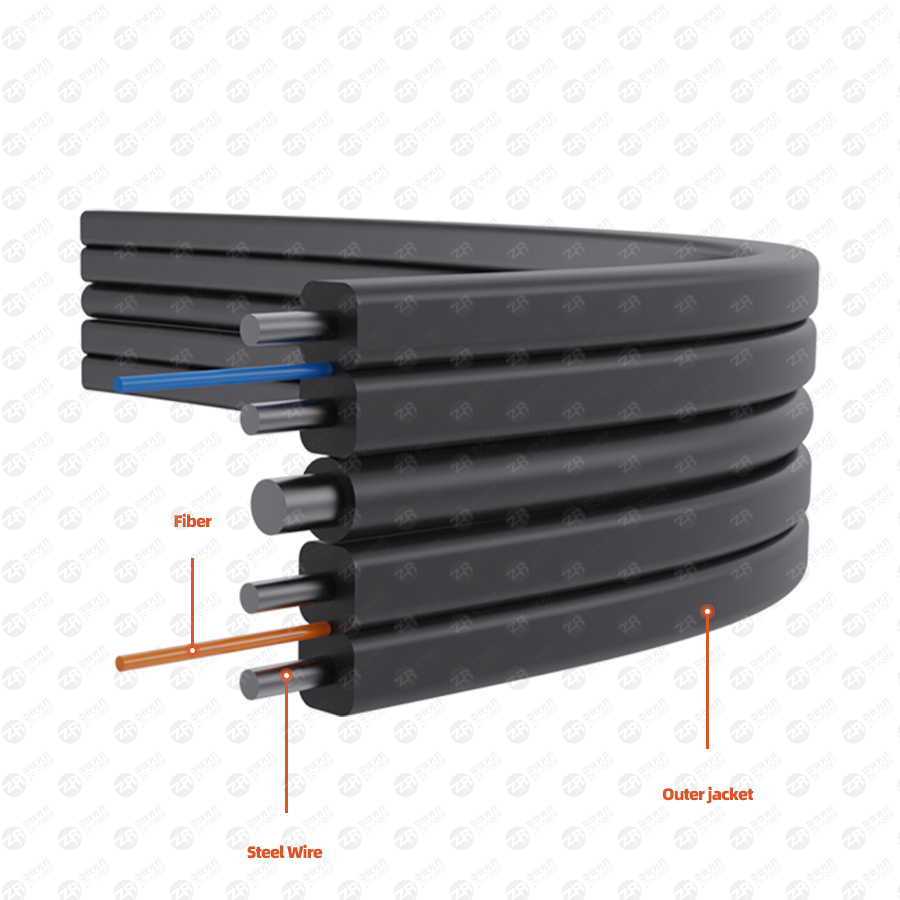Although optical cables and cables are both the transmission medium of communication lines, because of their fundamental differences in materials and working principles, the requirements for their installation and construction are very different. In actual construction, the installation and construction requirements of optical cables are higher than those of cables. Optical cable wiring is commonly used in building complex wiring of large and medium-sized networks and backbone wiring inside buildings, and can also be seen in network wiring in server rooms.
Optical fibers propagate signals through silica optical fibers. The fiber core in an optical cable is made of quartz glass, which is easily broken. If the construction personnel do it improperly, the quartz glass will hurt people; if the optical fiber connection is not good or broken, people will be exposed to light wave radiation and hurt the eyes.
The following preparations should be done before the construction of the optical cable.
ZR Cable optical cable wiring
1. Construction preparation
Optical cable visual inspection: After receiving the optical cable, the user should check the cable reel and the outer optical cable in time to determine whether the received optical cable is damaged. obstacle.
Quantity check: Check whether the total number of optical cables and the length of each reel are consistent with the contract requirements.
Quality inspection: Optical time domain reflectometer is used to check whether the optical cable has been damaged in transit. The data obtained from the inspection can be used to compare with the post-installation acceptance inspection data and can be used as part of the data record to facilitate emergency repair work in the future.
The use of wiring equipment should comply with the regulations: the model and specifications of the optical cable transfer equipment should meet the design requirements: the arrangement and marking names of the optical cable transfer equipment should be consistent with the design, the names of various markings should be unified, and the marking positions should be correct and clear.

2. Construction records and document preservation
A complete record is a necessary guarantee for the communication to work properly. Due to the multiple departments of optical cable communication and design, construction, operation and maintenance, after the construction is completed, all departments should cooperate with each other and keep all records properly for future work. The following should be included in the log file.
(1) Route topographic index map
The route topographic index map records the condition of the route and the roads traversed. Through this map, you can quickly find the place you need to reach in future work. For junctions, road or river intersections, they should be indicated on the drawing.
(2) circuit composition diagram circuit
The composition diagram includes the reel number, reel length, optical fiber type and core number of the optical cable used at each joint point in the line, road or river intersection, etc.
(3) Installation drawing
The installation drawing records the pole distance, grounding, etc.
(4) Optical fiber circuit diagram
The optical circuit diagram shows the actual fiber circuit, the number of cores used, the fiber color code, and subsequent handling of the fiber.
(5) Acceptance data record
The input optical power, received optical power, attenuation and other data measured during acceptance shall be recorded. Also included are optical time domain reflectometry (ODTR) plots for each fiber, splice loss, connector insertion loss, and photos of fibers and pigtails.
(6) Documents provided by the manufacturer
Manufacturer-provided data for each reel and the fibers in it.
(7) Save and update records
The original records should be copied in multiple copies, kept by both the construction and maintenance units, and a copy should be kept at the endpoints of the system. Records should be revised in a timely manner after line modification and intensive maintenance occur.